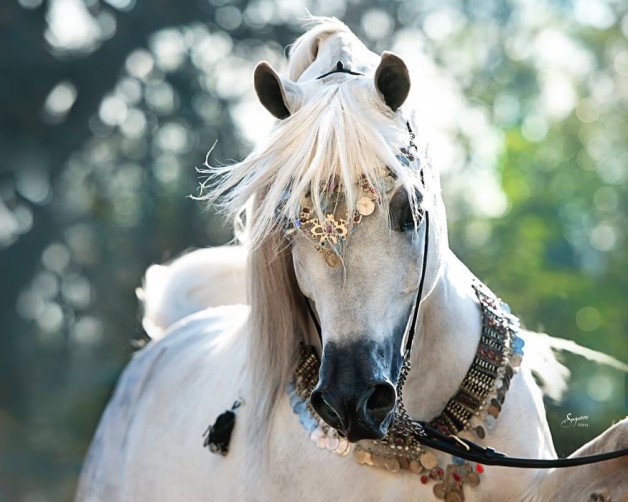By Christa Lesté-Lasserre
If you have broodmares, you know that housing them next to stallions or geldings could be dangerous—for the fetus: Czech researchers recently determined that pregnant mares can abort their fetuses as a stress response to prevent future infanticide.
In the wild, some stallions have been observed killing foals they did not sire. Even in domestic settings, mares—consciously or subconsciously anticipating that event—might abort their fetuses if they suspect infanticide could happen, explained Ludek Bartos, PhD, professor and department head in the Department of Ethology of the Institute of Animal Science in Praha Uhrineves, and of the Department of Animal Science and Ethology in the Faculty of Agrobiology, Food, and Natural Resources at the Czech University of Life Sciences in Praha.
The mares appear to be more likely to abort when they’re separated by a fence from a stallion or gelding, Bartos said. Somehow the mare recognizes that, because of the separation, the foal she’s carrying is not the product of that male, he explained. But she won’t recognize the fence as being sufficient protection for her future foal. To stop that male from killing her foal after birth, her body creates a stress reaction that leads to the unborn foal’s death.
“The stress is based on the fear the male ‘next door’ will commit infanticide one day, once she delivers her foal,” he said. “She may suffer from all known processes associated with stress and/or triggered by the stress. The final concrete abortogenic mechanism thus may be variable, but fatal for the embryo anyway.”
In their recent studies, Bartos and his fellow researchers examined how breeding management and where male and female horses were pastured affected abortion rates in domestic mares. They first evaluated 81 records of Czech broodmares and found that when mares were taken away from home to be bred, and then returned to their home site in the presence of male horses (geldings or stallions), the males tended to show sexual interest behaviors toward the mares. The mares showed such behaviors, as well.
Pregnancy ended in abortion in 22% of the cases where the mares were in the same enclosure as the male horses, Bartos said. But if the mare was separated from the male horses by a fence, that rate rose to 54%. By contrast, none of the mares bred to home stallions aborted.
In a second study, they examined 77 cases of Czech mares bred by artificial insemination to stallions that did not reside at the mares’ home site. They found similar results—these mares also tended to abort their fetuses. Again, fencing played an important role: 54% of pregnancies aborted when the mares were separated from males by a fence, compared to 12% when the mares were in the same enclosure.
Another important factor playing a role in pregnancy success was the number of live foals the mare had already produced, Bartos added. The more previous live foals, the more likely the mare was to maintain the current pregnancy, regardless of the housing/fencing situation.
“It might be that it’s more beneficial for younger mares to avoid the risk of getting injured by a stallion when trying to protect her foal, since she can ‘easily’ replace a current pregnancy with another one, given her higher fertility rates due to her youth,” Bartos said. “This is in contrast with aged mares, who may have difficulties replacing a current pregnancy with another one. The mare is thus choosing the better solution among generally bad options.”
To encourage healthy pregnancies, Bartos recommends that pregnant mares ideally be kept out of all seeing, hearing, and smelling contact with stallions or geldings unless they’re housed with the stallion that sired the foal.
“If this is not possible, then the probability of disrupting pregnancy is eight times lower when the mare is sharing the enclosure with males rather than been separated from them by a fence,” he said. “This is probably in contrast with what the owners would intuitively do. Owners often hope to keep pregnant mares ‘safer’ in a paddock, separating or ‘giving them rest’ from the males, which is in fact the most dangerous option.”




Not true. You have got to be kidding. Nonrepeatable.